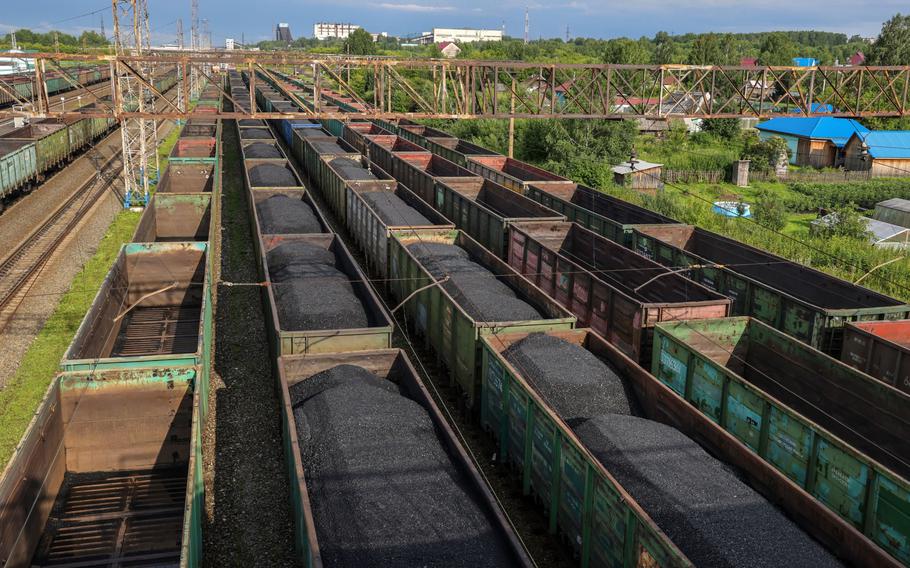
Coal in freight wagons ahead of shipping at Tomusinskaya railway station near Mezhdurechensk, Russia, on July 19, 2021. (Andrey Rudakov/Bloomberg)
The world is set to add as much renewable energy in the next five years as it did in the past two decades, as a global energy crisis sparked by the war in Ukraine accelerates growth in renewables such as wind and solar, the International Energy Agency says.
Led by solar energy, renewables are poised to overtake coal as the largest source of electricity generation worldwide by early 2025, helping to keep alive the global goal of limiting Earth's warming to 2.7 Fahrenheit, according to the Paris-based agency's latest forecasts.
"Energy security concerns caused by Russia's invasion of Ukraine have motivated countries to increasingly turn to renewables such as solar and wind to reduce reliance on imported fossil fuels," the IEA said in a report on renewable energy published this month.
Global renewable power capacity is now expected to grow by 2,400 gigawatts between 2022 and 2027, an amount equivalent to the entire power capacity of China today, according to the IEA report, the latest on the renewables sector.
Global solar capacity is set to almost triple over the next five years, surpassing coal and becoming the largest source of power capacity in the world, the IEA said.
The capacity increase forecast in the report is 30 percent higher than the renewables growth the IEA was predicting only a year ago. More than 90 percent of global electricity expansion will be from renewable sources in the next five years, the IEA said.
"Renewables were already expanding quickly, but the global energy crisis has kicked them into an extraordinary new phase of even faster growth," IEA Executive Director Fatih Birol said in a news release.
The IEA described the war in Ukraine as a "decisive moment" for renewables in Europe, where governments and businesses are looking to rapidly replace Russian gas with alternatives.
In the wake of the conflict, Germany — already a leader in renewable technologies but reliant on Russia for the bulk of its oil, natural gas and coal — brought forward its goal of 100 percent renewable power by more than a decade to 2035.
The IEA said Europe could roll out wind and solar even faster if European Union members agree to measures including streamlining and reducing permitting timelines, improving auction designs and providing better visibility on auction schedules, as well as improving incentives to support rooftop solar.
Outside Europe, growth in renewables is being driven by China, the United States and India — all of which are introducing regulatory and market reforms faster than anticipated to combat the energy crisis. China alone is expected to account for almost half of new global renewable power capacity over the next five years, under a blueprint released as part of its five-year plan in June.
In the United States, the Inflation Reduction Act has provided new support. The act, passed in August, includes $369 billion in climate- and energy-related funding — much of it aimed at high-tech solutions to help nudge the world's biggest historical emitter toward a greener future.
"The current energy crisis can be a historic turning point towards a cleaner and more secure energy system," said Birol. "Renewables' continued acceleration is critical to help keep the door open to limiting global warming" to 1.5 degrees Celsius.